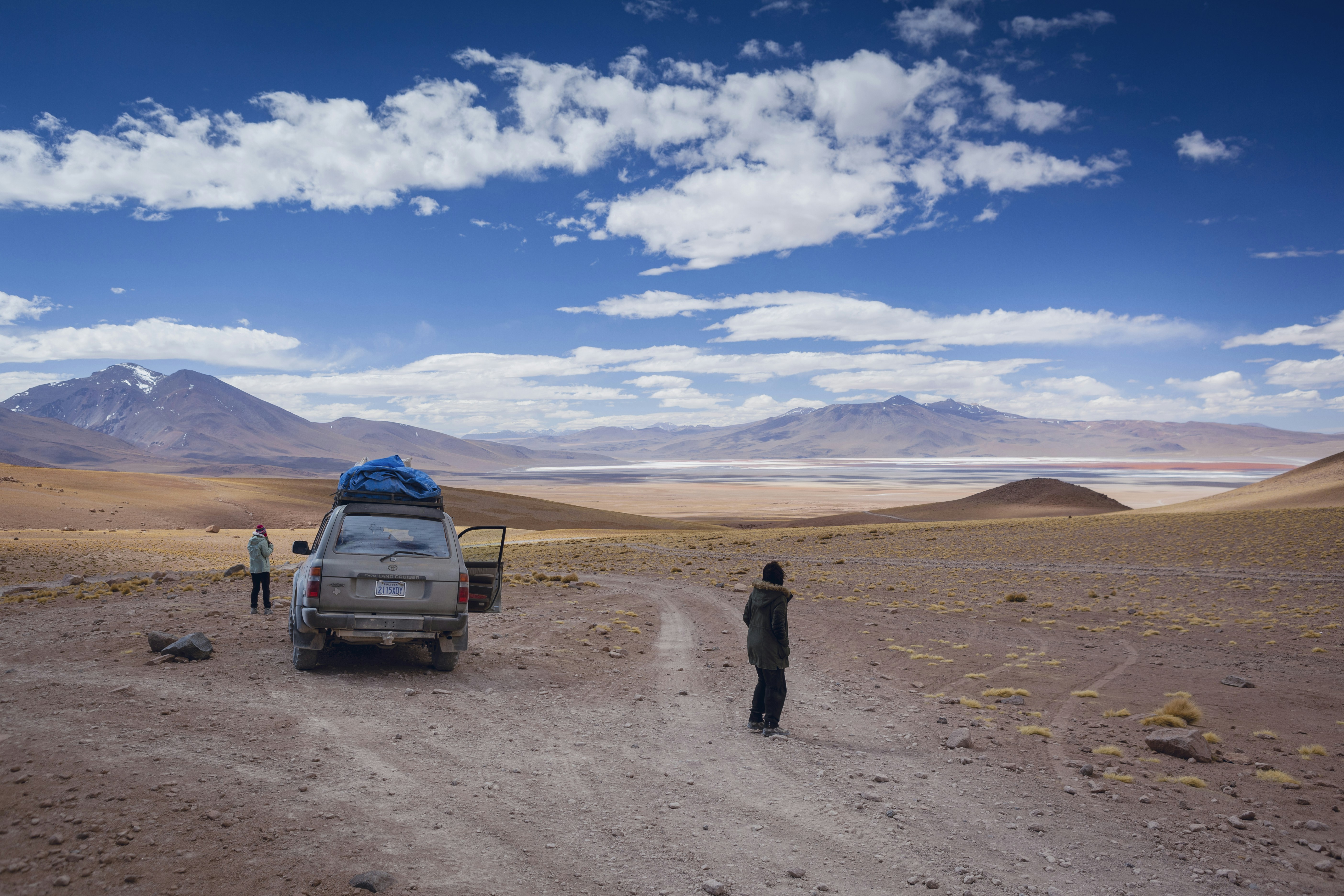Silence is Golden: How EV Noise Shapes Urban Wildlife Dynamics
As the world shifts gears from combustion engines to the silent embrace of electric vehicles (EVs), the implications stretch far beyond the realm of transportation. Silent streets may appear idyllic, but beneath the surface lies a complex web of interactions between urban wildlife and their changing environment. The reduction of noise pollution from EVs presents both opportunities and challenges for various species trying to adapt to a world that is suddenly quieter. This article will dive into the multifaceted impact of EV noise—or the lack thereof—on urban ecosystems, particularly focusing on bird mating calls, predator-prey dynamics, and biodiversity in our cities.
The Sound of Silence: A Shift in Urban Acoustic Landscapes

For decades, cities have been enveloped in the continuous drone of combustion engines, honking horns, and bustling pedestrian noise. These sounds form a natural soundtrack that urban wildlife has come to navigate, but with the introduction of EVs, that landscape is evolving dramatically. Research suggests that with the decibel levels dropping, some avian species are finding it easier to communicate, while others may struggle to adapt.
According to a study published in the Journal of Urban Ecology, the decline in noise pollution has been correlated with an increase in bird mating calls, particularly in species known for their vocal displays. However, this newfound serenity poses unique challenges. Bird species that rely on distinct auditory cues for mate attraction might flourish, but others may struggle in an altered acoustic space—potentially leading to shifts in biodiversity within urban settings.
The Mating Game: Bird Calls in a Quieter World

Imagine standing in a park on a sunny morning, the air filled with the chirping of birds, each vying for attention. In a world where those sounds were once drowned out by roaring engines, the delicate songs of birds are emerging victorious in urban settings as EVs take to the roads. However, as we marvel at this change, we must also consider the implications for species that depend on specific sound frequencies to attract mates.
Research indicates that some bird species have begun to alter their calls due to the quieter environment, adjusting frequencies to ensure their songs remain distinguishable against this new backdrop. For instance, studies documented in Science Advances suggest that the American Robin has shifted its vocal tone in urban areas where EVs dominate.
This sort of adaptation is necessary for survival, but what happens to species that struggle to keep up? It raises questions about urban biodiversity—is it perpetually shifting in response to our transportation choices?
Predators and Prey: A Delicate Balance

In the intricate tapestry of urban ecosystems, the soundscape acts as both a shield and a beacon for various wildlife species. For predators, sound plays a crucial role in detecting prey, while prey animals often rely on auditory cues to sense incoming danger. A quieter urban environment changes this dynamic significantly.
For example, researchers have found that certain rodent populations are thriving in quieter neighborhoods, where the absence of engine noise allows them to hear the calls of their own kind without fear of detection. This may lead to increased prey density in some areas, which, in turn, impacts predator populations. If, say, urban foxes and hawks discover that hunting becomes easier due to the absence of noise, we may see a rise in their numbers, reshaping the balance of urban ecosystems.
Contrarily, species that depend on auditory signals—like bats that use echolocation—could find it harder to pursue their usual prey if their own calls no longer echo clearly through the urban fabric shaped by EVs.
Urban Biodiversity: Winners and Losers

The shift toward electric vehicles embodies a larger evolution within urban planning and wildlife adaptability. On one hand, reducing noise pollution offers new avenues for wildlife to flourish. On the other hand, it can also lead to the decline of species that cannot keep pace with these changes, thus threatening urban biodiversity.
Studies like those conducted by the Center for Urban Ecology indicate that cities will increasingly need to consider these factors in their urban planning efforts. How we design green spaces, parks, and roadways will play a significant role in addressing the needs of both human residents and our wildlife cohabitants. For example, ensuring that essential habitats are preserved or even enhanced can foster a richer urban biodiversity, benefitting from the quieter acoustic environment.
To read more about how urban wildlife can shape future EV infrastructure design, check out this overview.
The Broader Impact: Rethinking Urban Designs

The changes brought by electric vehicles go beyond roads and charging stations—they challenge the traditional designs of our cities. As urban planners rethink spaces, a more holistic approach can emerge. Integrating biodiversity into urban ecosystems, designed with the needs of both wildlife and people in mind, can make our cities not just quieter but also healthier.
By prioritizing biodiversity-friendly designs like green roofs, wildlife corridors, and noise-reducing structures, we can create urban areas that invite wildlife to thrive. Parks can become multi-functional spaces that not only serve as recreational areas for humans but also as safe havens for urban wildlife.
Harnessing the Soundscape: Embracing Nature’s Melodies

Just as the absence of sound is altering urban wildlife, we have the opportunity to create environments that celebrate soundscapes. Incorporating natural acoustic elements in urban settings can foster a deeper connection with nature.
A fantastic example is utilizing biophilic design principles in new EV infrastructures. This approach focuses on integrating natural elements that bolster human and wildlife connectivity. Imagine EV charging stations surrounded by vibrant gardens filled with flowers that attract bees and hummingbirds, creating a symbiotic environment that enhances the ecosystem while providing benefits to city dwellers.
Discover more about how integrating nature into EV designs can transform urban experiences in our piece on biophilic design.
Future-Proofing for Urban Wildlife

Forward-thinking urban planners and city advocates must begin to incorporate wildlife and biodiversity into conversations about transportation development. This proactive stance will ensure that the rise of electric vehicles does not come at the cost of our urban ecosystems.
Emphasizing education and awareness will play a critical role in this endeavor. By encouraging residents and local businesses to champion responsible practices and understand the implications of sound changes in their neighborhoods, we can initiate a collaborative effort that positively impacts both humans and wildlife alike.
Resources such as local wildlife organizations and conservation initiatives can provide vital information and support for urban developers and city planners who aim to strike this balance.
Final Thoughts: A Call to Action for Urban Evolution

As we shift towards a more electrified future, it’s clear that the transition to electric vehicles isn’t only an opportunity for cleaner air and reduced greenhouse emissions; it’s a chance to reshape the relationship between urban life and wildlife.
Let’s not merely celebrate the silence that comes with EVs, but rather engage with it. Let's actively consider how we can foster environments where both urban ecosystems and human communities thrive together. Acknowledging the interplay between electric vehicle technology and the natural world compels us to rethink transportation in an interconnected way—where the "sound of silence" becomes a catalyst for change.
There’s nothing silent about the conversation we need to have about wildlife in our cities. As citizens, drivers, and advocates for a better urban landscape, our call to action extends beyond just a change in vehicles; it involves an evolution in how we design, interact with, and protect the world around us.
As we move forward, let's ensure we create a harmonious urban ecosystem capitalizing on the natural world while embracing modern technology. Don't hesitate to explore our other articles on the role of EVs in transforming urban spaces and fostering sustainability, like green spaces and pet travel.



